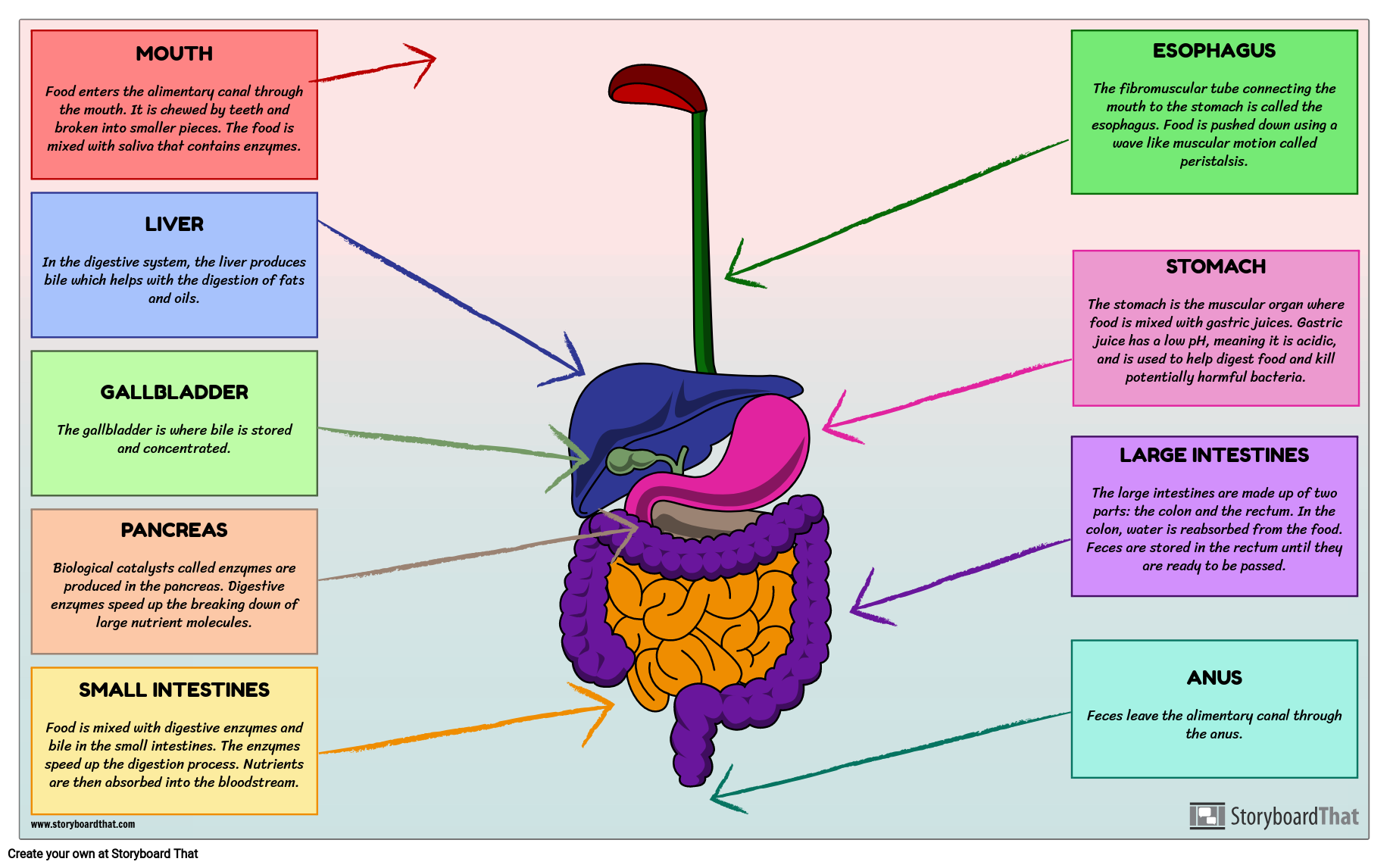Digestive System

You can find this storyboard in the following articles and resources:

The Digestive System & Processes
By Oliver Smith
Digestion is the process by which the food we eat is broken down into nutrients that can be used by the body. The digestive system has a number of different, well adapted parts that work together to take food from bite-size to useful molecules that your body can use. The following activities aim to introduce students to this process with fun visual aids.
'
Storyboard Description
Annotated Digestive System diagram - science activities
Storyboard Text
- MOUTH Food enters the alimentary canal through the mouth. It is chewed by teeth and broken into smaller pieces. The food is mixed with saliva that contains enzymes.
- LIVER In the digestive system, the liver produces bile which helps with the digestion of fats and oils.
- GALLBLADDER The gallbladder is where bile is stored and concentrated.
- PANCREAS Biological catalysts called enzymes are produced in the pancreas. Digestive enzymes speed up the breaking down of large nutrient molecules.
- SMALL INTESTINES Food is mixed with digestive enzymes and bile in the small intestines. The enzymes speed up the digestion process. Nutrients are then absorbed into the bloodstream.
- ESOPHAGUS The fibromuscular tube connecting the mouth to the stomach is called the esophagus. Food is pushed down using a wave like muscular motion called peristalsis.
- LARGE INTESTINES The large intestines are made up of two parts: the colon and the rectum. In the colon, water is reabsorbed from the food. Feces are stored in the rectum until they are ready to be passed.
- ANUS Feces leave the alimentary canal through the anus.
- STOMACH The stomach is the muscular organ where food is mixed with gastric juices. Gastric juice has a low pH, meaning it is acidic, and is used to help digest food and kill potentially harmful bacteria.
Over 30 Million Storyboards Created








